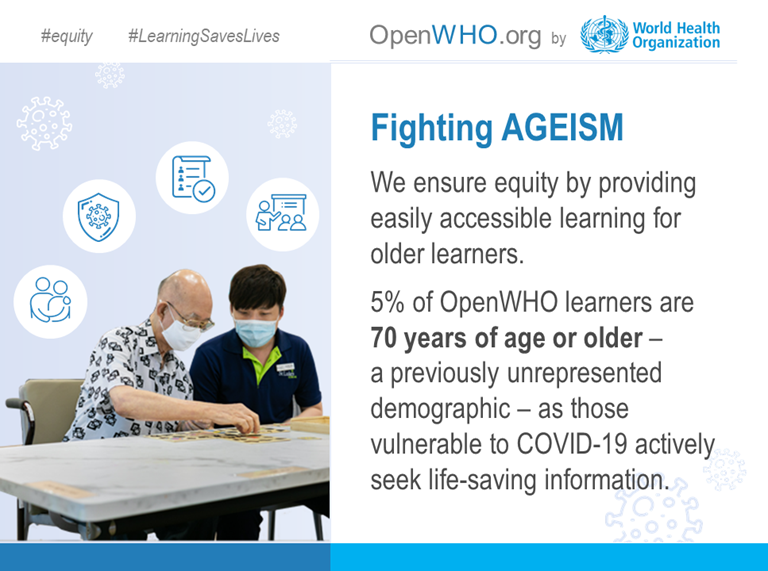The COVID-19 pandemic has equalized the use of OpenWHO.org by gender. Prior to the pandemic, women represented 40% of platform learners, while men represented 60%; during the pandemic, the proportion of women participating in online learning on OpenWHO grew to 51%, slightly overtaking male learners (49%). The percentage of users identifying their gender as ‘other’ also increased from 0.08% to 0.15%. In courses on topics other than COVID-19, female learners provided fewer enrolments (43%).

Completion rates on OpenWHO have increased from 39% to a platform average of 54% during the pandemic. The platform has also expanded its reach to older and younger user groups. The age bracket of 70 years and older rose from 0% to 4.6% of learners, and users under 20 years have grown from 1.3% to 9.8%.
During the pandemic, enrolments from the WHO African Region have decreased from 23.1% to 8.6% of total enrolments, as interest in COVID-19 courses globally has outpaced courses addressing other, more regionalized outbreaks. Meanwhile, COVID-19 courses are both the most popular and have increased enrolments in the Southeast Asian (36%) and American (26%) regions.
When platform use is assessed based on countries’ classification by income level from the World Bank, additional shifts during the pandemic can be observed. Middle-income countries now dominate as the largest percentage of users (rising from 40.2% to 70.6% of total enrolments).
